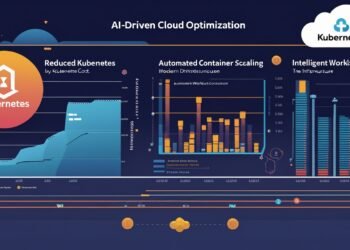In an era where cybersecurity threats are growing more sophisticated, Google has taken a major step forward in improving software security by launching OSV-Scanner, an open-source tool designed to detect security vulnerabilities in software dependencies. This initiative builds upon Google’s Open Source Vulnerabilities (OSV) database, providing developers and organizations with a robust solution to identify and mitigate security risks in their codebases.
The Need for OSV-Scanner
With the increasing reliance on open-source software, securing software supply chains has become a top priority. Many modern applications integrate multiple open-source libraries and dependencies, which, if not properly monitored, can introduce security vulnerabilities. Cyber attackers often exploit these vulnerabilities, leading to data breaches, unauthorized access, and even system failures.
Traditional vulnerability scanners often require manual configurations and struggle with accuracy due to mismatched versions and incomplete databases. Google’s OSV-Scanner aims to address these issues by providing an automated, accurate, and developer-friendly way to identify known vulnerabilities in software projects.
How OSV-Scanner Works
Google’s OSV-Scanner is designed to integrate seamlessly into the development workflow, providing real-time security insights. The scanner functions by:
- Scanning Project Dependencies
- OSV-Scanner analyzes a project’s dependency list, checking for known vulnerabilities.
- Matching Against OSV Database
- The scanner cross-references dependencies against Google’s Open Source Vulnerabilities (OSV) database, which aggregates security advisories from sources like GitHub Security Advisories, NVD (National Vulnerability Database), and package ecosystems such as npm, PyPI, and Maven.
- Providing Accurate Vulnerability Reports
- Unlike traditional vulnerability scanners that rely on package names alone, OSV-Scanner uses a more precise method by matching vulnerabilities to specific versions, reducing false positives.
- Offering Remediation Suggestions
- The tool not only detects vulnerabilities but also suggests fixes, such as upgrading to a secure version or applying patches.
Key Features of OSV-Scanner
Google’s OSV-Scanner introduces several key features that make it a game-changer for developers and security professionals:
- Open-Source and Free – Available for everyone to use, OSV-Scanner is completely open-source, aligning with Google’s commitment to improving open-source security.
- Automated and Developer-Friendly – The tool automates security checks, making vulnerability detection an easy part of the development workflow.
- Comprehensive Vulnerability Database – OSV-Scanner leverages one of the most extensive vulnerability databases, ensuring high accuracy.
- Language and Ecosystem Support – It supports multiple programming languages and package managers, including npm (JavaScript), PyPI (Python), Maven (Java), and more.
- Integration with CI/CD Pipelines – Developers can integrate OSV-Scanner into Continuous Integration/Continuous Deployment (CI/CD) pipelines to prevent vulnerable dependencies from being deployed.
Impact on the Developer Community
The launch of OSV-Scanner is a significant advancement for open-source security. It empowers developers by offering:
- Better Awareness of Security Risks – By providing real-time insights, OSV-Scanner enables developers to catch vulnerabilities before they become security threats.
- Reduced Security Overhead – The automated scanning process reduces the manual effort needed to track and patch vulnerabilities.
- Encouragement for Open-Source Contribution – By ensuring a more secure open-source ecosystem, Google’s tool can encourage more developers to contribute without fear of security risks.
Challenges and Limitations
While OSV-Scanner is a powerful tool, there are still challenges to consider:
- Limited to Known Vulnerabilities – The scanner can only detect vulnerabilities that have been publicly reported and documented in the OSV database.
- Dependency Complexity – Some projects have deeply nested dependencies, which might make it challenging to detect every security risk.
- Requires Regular Updates – The scanner’s effectiveness depends on the continuous updating of the OSV database to include new security advisories.
The Future of OSV-Scanner and Open-Source Security
Google’s launch of OSV-Scanner marks a critical step in the evolution of open-source security tools. As cyber threats continue to evolve, tools like OSV-Scanner will play an essential role in helping developers and organizations maintain secure software supply chains.
Looking ahead, Google may enhance OSV-Scanner by:
- Expanding support for more programming languages and package managers.
- Improving integration with security automation tools.
- Enhancing AI-driven vulnerability detection to identify risks beyond known vulnerabilities.
Conclusion
Google’s OSV-Scanner is a game-changer in the realm of open-source security. By providing an open, automated, and highly accurate tool for detecting vulnerabilities, Google is taking a proactive approach to securing the software ecosystem. As more developers and organizations adopt OSV-Scanner, the tool has the potential to significantly reduce security risks and make open-source software safer for everyone. With its integration into development workflows and continuous updates, OSV-Scanner is poised to become a fundamental tool for modern software security.

















